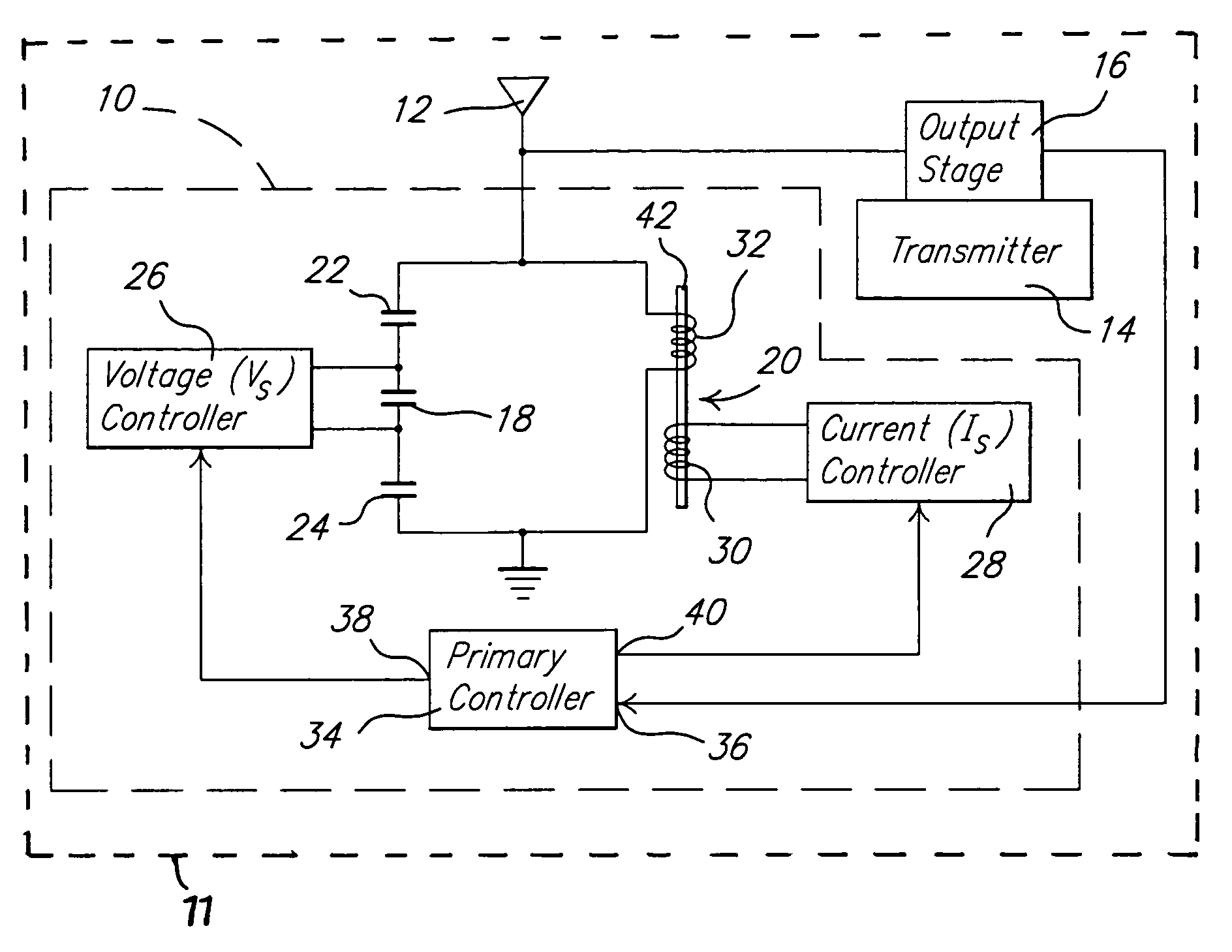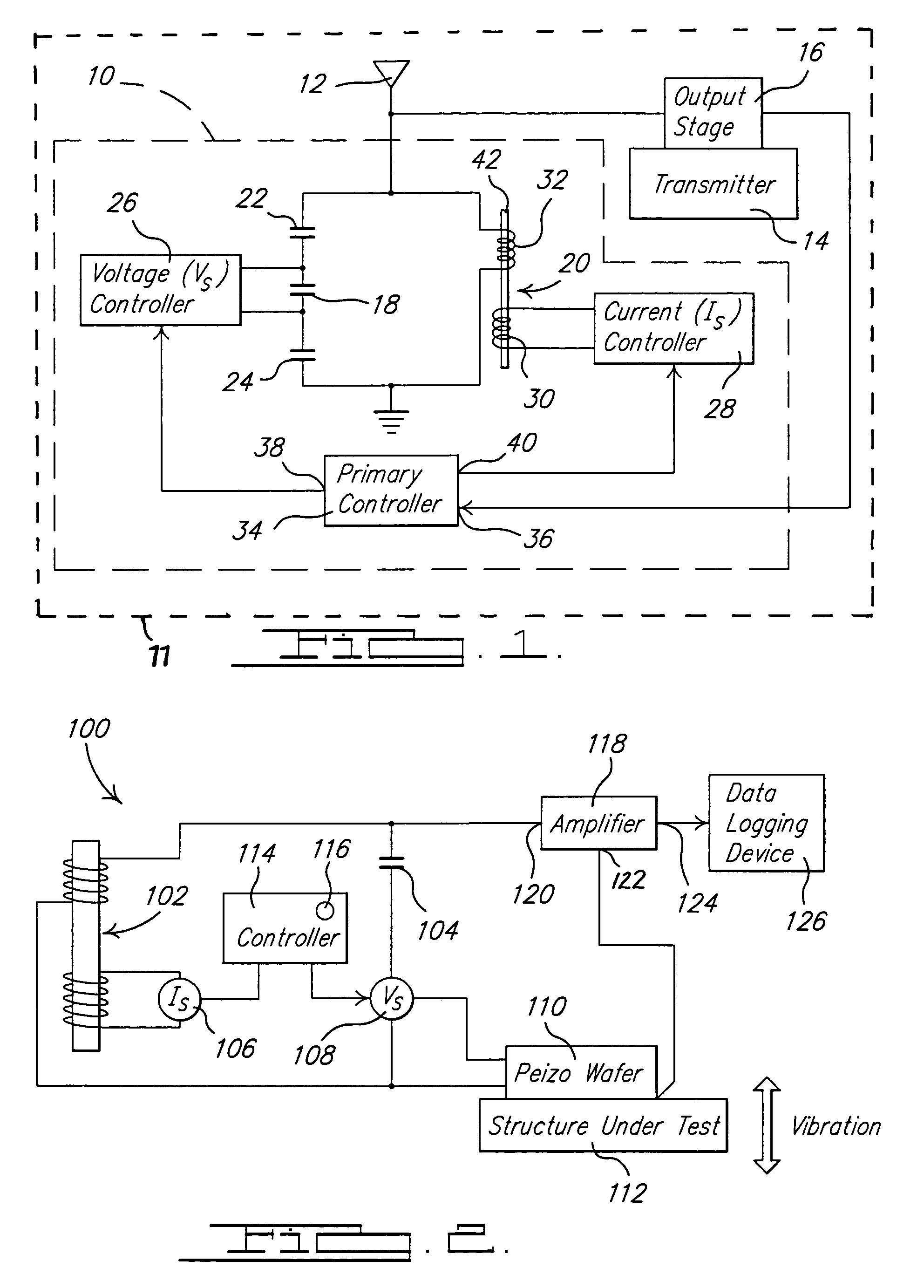Electrically tuned resonance circuit using piezo and magnetostrictive materials
a resonance circuit and magnetostrictive material technology, applied in the direction of electricly long antennas, oscillation generators, antennas, etc., can solve the problem of limiting the dynamic range of tuning by using diodes
- Summary
- Abstract
- Description
- Claims
- Application Information
AI Technical Summary
Benefits of technology
Problems solved by technology
Method used
Image
Examples
Embodiment Construction
[0012]The following description of the preferred embodiment(s) is merely exemplary in nature and is in no way intended to limit the invention, its application, or uses.
[0013]Referring to FIG. 1, an impedance matching system 10 is shown in accordance with a preferred embodiment of the present invention. The impedance matching system 10 is included within a cellular telephone 11. The system 10 is electrically coupled to an antenna element 12 and to an output stage 16 of an electromagnetic wave transmitter 14. The system 10, however, can be employed in any application where it is desired to match the impedance of a first electrical component with the impedance of a second electrical component.
[0014]The system 10 includes a non-linear piezo capacitor 18 coupled in parallel to a magnetostrictive inductor 20. A pair of blocking capacitors 22 and 24 are coupled in series with the piezo capacitor 18. Voltage blocking capacitors 22 and 24 have a capacitance preferably in the range of about 1...
PUM
 Login to View More
Login to View More Abstract
Description
Claims
Application Information
 Login to View More
Login to View More - R&D
- Intellectual Property
- Life Sciences
- Materials
- Tech Scout
- Unparalleled Data Quality
- Higher Quality Content
- 60% Fewer Hallucinations
Browse by: Latest US Patents, China's latest patents, Technical Efficacy Thesaurus, Application Domain, Technology Topic, Popular Technical Reports.
© 2025 PatSnap. All rights reserved.Legal|Privacy policy|Modern Slavery Act Transparency Statement|Sitemap|About US| Contact US: help@patsnap.com


